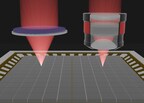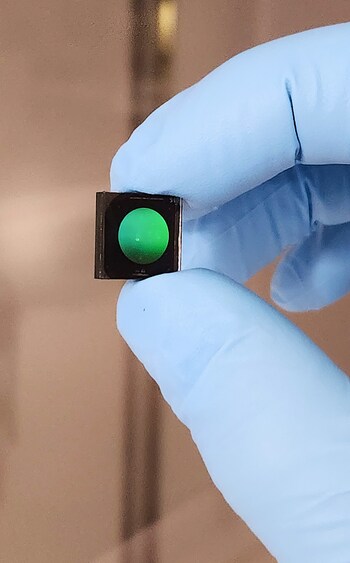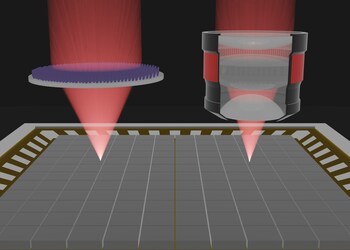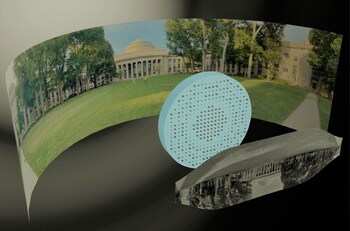With its patented technology that can extend metalens field of view (FOV) to almost 180 degrees without sacrificing imaging quality, 2Pi Optics outperforms conventional wide-FOV refractive optics in size, weight, performance, and cost
LAS VEGAS, Jan. 4, 2024 /PRNewswire-PRWeb/ -- (CES booth #16759) 2Pi Inc. (2Pi Optics), an innovator of high-performance metasurface optics technologies, has introduced the world's first high-resolution fisheye sensor based on optical metalens technology. This breakthrough technology, demonstrated today by 2Pi Optics, is widely anticipated by design engineers who want to further miniaturize the cameras used in advanced driver-assistance systems (ADAS), AR/VR, UAVs, robotics and other industrial applications, and establishes 2Pi Optics at the forefront of optical sensor technologies.
Camera-based optical sensor technologies are growing at an unprecedented pace and are ubiquitous in both consumer and industrial applications. 2Pi's innovation addresses a crucial disadvantage of today's miniature cameras: their complex and expensive optical lenses. 2Pi Optics addresses that challenge today with the first flat fisheye lens to produce crisp, 180-degree panoramic images.
2Pi's proprietary technology replaces bulky and costly conventional wide-FOV lenses—which are typically composed of multiple stacked lens pieces—with a single, thin, flat metalens. This revolutionary approach enables the design of ultra-compact, high-performance optical imagers and sensors, and brings breakthrough, new capabilities to devices and sensors in a broad array of applications.
Founded in 2021 as a spin-off from MIT, 2Pi's founders have consistently pushed the physical capabilities of metalens technology, a wafer-thin material patterned with microscopic features that work together to manipulate light in a specific way. The team's published research and patents position the company to leapfrog existing technologies offered by other companies in this category.
"Today's refractive fisheye lenses, which are used to capture wide-angle, panoramic images, have hit a design roadblock," said Dr. Juejun Hu, president and co-founder of 2Pi. "They require between six and twelve stacked lens components, which limits their compactness and affordability. Our design, in contrast, outperforms conventional refractive, wide-FOV optics in all areas: size, weight, performance, and cost. Better still, 2Pi's metalenses can be manufactured at wafer scale in conventional semiconductor foundries."
2Pi's metasurface-enabled cameras and 3-D depth sensor modules can be configured for a diverse spectrum of specifications, targeting different markets:
- Sensors for AR/VR headsets: the cameras can be used for environment mapping, hand/eye tracking, as well as gesture and facial recognition. Their small size and weight present a crucial advantage for wearable devices such as headsets and handsets, and their ability to achieve a field of view matching that of human vision is essential to creating an immersive experience for users.
Where to get more information
OEMs wishing to learn more about how 2Pi's metalens technology can be integrated into their applications and devices should drop by the 2Pi Optics booth at CES: LVCC Central Hall, Booth #16759 or email [email protected].
About 2Pi Inc.
2Pi is a pioneer and leader in optical metalenses, a wafer-thin material patterned with microscopic features that work together to manipulate light in a specific way. 2Pi's metalenses enable the development of a new class of lightweight optical components and systems that offer unprecedented performance and ultra-compactness, making them ideal for use in consumer electronics, industry automation, automotive, and beyond. Founded in 2021 by a team of MIT scientists, 2Pi is based in Cambridge, Massachusetts. For more information, visit 2pioptics.com.
Media contacts:
Agency: Tim Cox, ZingPR for 2Pi Inc.
[email protected]
Company: [email protected]
Media Contact
Tim Cox | ZingPR, 2Pi Optics, 6508886116, [email protected], https://www.2pioptics.com/
SOURCE 2Pi Optics






Share this article